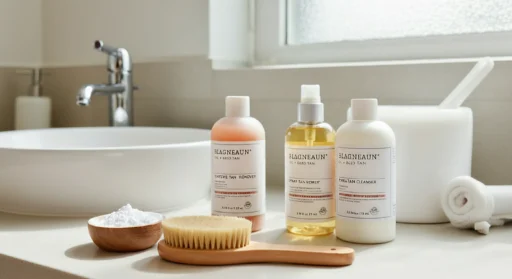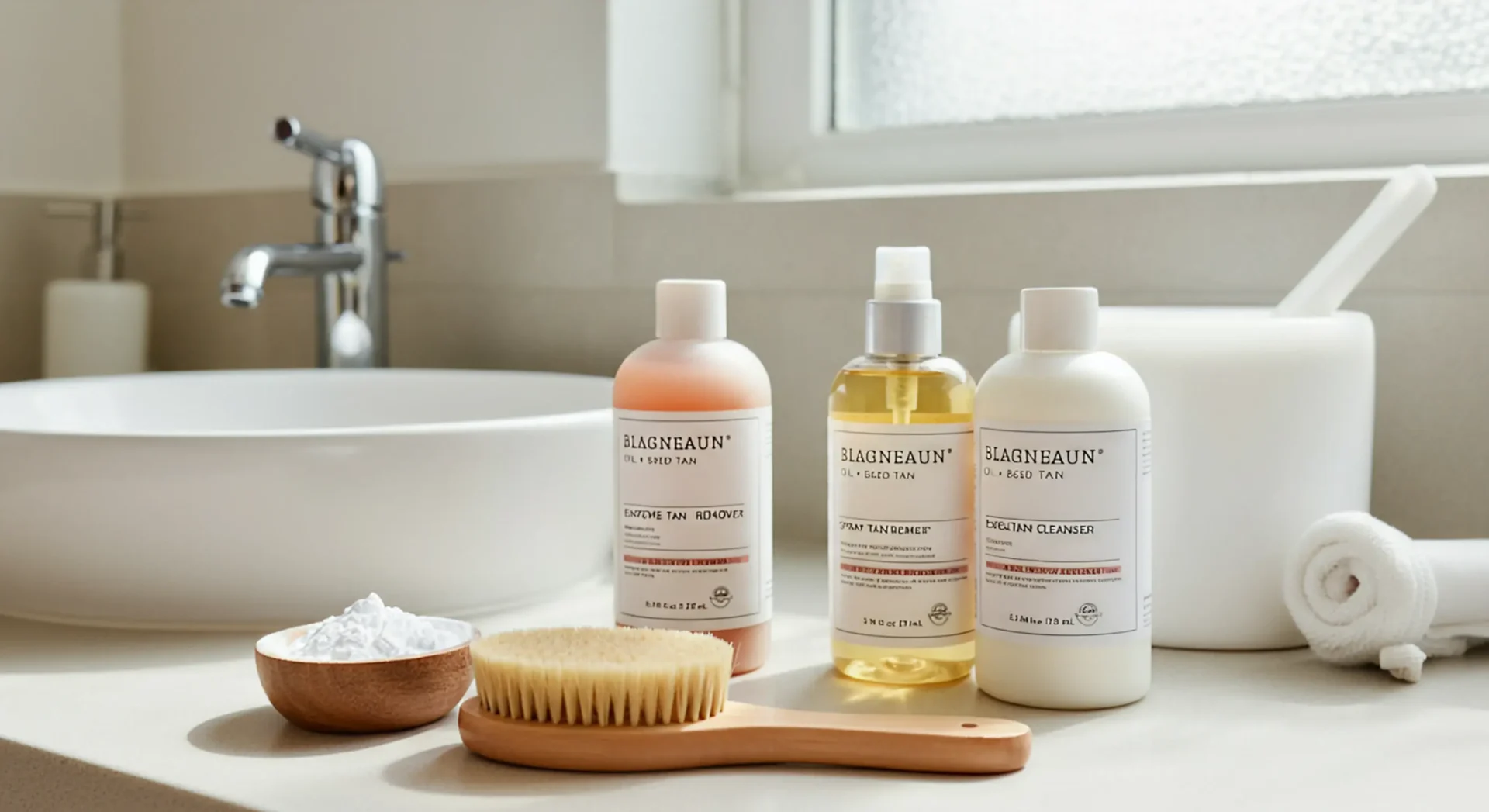A spray tan creates beautiful sun-lightened skin tones until fading becomes mismatched with dry spots and results in poor appearance quality. Whether you’re dealing with stubborn streaks, correcting a spray tan gone wrong, or preparing for another round of tanning, learning how to remove spray tan effectively is essential.
This guide will walk you through skin-friendly tan removal remedies that will help you get rid of patchy spray tan without damaging your skin. From natural DIY options to professional techniques, we’ll teach you how to fade spray tan fast while keeping your skin healthy and hydrated.
Understanding Spray Tan: Why Removal Can Be Tricky
Before jumping into removal methods, it helps to understand what makes spray tan cling to your skin.
What is a spray tan?
Spray tan solutions contain DHA (dihydroxyacetone), a compound that reacts with dead skin cells on the surface of your skin to create a temporary bronzed look.
Why is tan removal challenging?
Spray tans naturally fade over time as your skin sheds, but they can fade unevenly, especially on areas prone to dryness like knees, elbows, and ankles. Exfoliating too harshly or using the wrong products can irritate your skin and worsen the problem.
Common mistakes when removing a tan:
Over-scrubbing with harsh exfoliants.
Using strong chemical peels meant for your face on large areas of your body.
Ignoring post-removal skincare, leading to dryness or sensitivity.
Now, let’s explore the best ways to exfoliate spray tan safely and effectively!
1
Use Enzyme-Based Body Washes for Gentle Breakdown
Enzyme-based cleansers containing pineapple or papaya extracts are gentle yet effective at breaking down the DHA in a spray tan. The enzymes target dead skin cells, helping your tan fade naturally while preserving moisture in the skin.
Recommended Products
- Look for body washes labeled as “enzyme-based” or those featuring natural fruit enzymes.
- Always check for formulas free from harsh chemicals, especially if you have sensitive skin.
Use these products daily in the shower to gradually remove fake tan at home without irritation.
2
Try a Sauna or Steam Session for Natural Fading
Sweat and heat can work wonders when it comes to fading a spray tan. A sauna or steam room session opens your pores, softening the tan and making it easier to wipe away with a soft washcloth.
Precautions: Make sure to keep your session short (10–15 minutes) to avoid over-drying your skin, and remember to rehydrate with a nourishing moisturizer afterward.
3
Remove Streaks with Micellar Water and Cotton Pads
If you’re looking to remove tanning streaks on smaller areas like your face, neck, or hands, micellar water is an excellent option. This gentle formula effectively lifts residual tan without the need for aggressive scrubbing.
How to use it?
- Pour micellar water onto a cotton pad.
- Gently swipe over streaks or patches to lift the tan.
This method is particularly useful for fixing a spray tan gone wrong without full removal.
4
Apply Baking Soda and Lemon Paste on Tough Spots
For stubborn areas like knees, elbows, and ankles, a DIY paste of baking soda and lemon can do the trick. The effervescent properties of baking soda, combined with citric acid from the lemon, help dissolve tanning streaks.
How to make the paste?
- Mix 1 tablespoon of baking soda with a few drops of lemon juice and water.
- Apply to the affected areas in a circular motion, then rinse thoroughly.
Avoid over-exfoliating to protect sensitive skin.
5
Use Glycolic or Lactic Acid Toners to Speed Up Cell Turnover
Alpha Hydroxy Acids (AHAs), like glycolic or lactic acid, gently exfoliate your skin by accelerating cell turnover. These toners are excellent for removing fake tan at home while enhancing your skin’s texture.
Where and how to apply?
- Focus on areas like your chest, arms, and back.
- Apply after cleansing, and always follow up with sunscreen to protect your skin from sun damage.
6
Switch to Oil-Based Cleansers in Your Shower Routine
Oils help dissolve tanning pigments while providing a boost of hydration. Start incorporating oil-based cleansers into your shower routine after day 3 of your spray tan.
Pro Tip: Coconut oil, argan oil, or jojoba oil are natural alternatives that work just as well as store-bought cleansers.
7
Use a Soft Bristle Dry Brush Before Showering
Dry brushing helps in gently exfoliating dead skin cells, speeding up the fading of a spray tan. It also boosts circulation and encourages lymphatic drainage, giving your skin a healthy glow.
Dry Brushing Tips
Use a soft-bristle brush and gently glide it over your skin in circular motions.
Focus on areas where the tan clings more stubbornly, but avoid overusing it on sensitive skin.
8
Repair and Rehydrate Skin Post-Tan Removal
Post-tan removal care is crucial to maintaining smooth, healthy skin. Repair your skin barrier with products rich in ceramides, hyaluronic acid, and barrier creams.
Best Practices
- Avoid hot showers for 24 hours after tan removal to prevent irritation.
- Apply fragrance-free, hydrating lotions to lock in moisture.
This step is essential to prevent post-removal sensitivity or peeling.
Conclusion
Knowing how to remove spray tan correctly can save you from streaks, patches, and skin damage, while also preparing you for fresh tanning sessions. The process of removing a spray tan requires gentle exfoliation together with natural tan removal techniques along with adequate hydration for optimal results.
If you’re dealing with spray tan gone wrong or just ready for a reset, follow these skin-friendly tan removers to glow confidently and safely. For long-term skincare, incorporate post-tan skincare tips to maintain soft, healthy skin year-round.
Frequently Asked Questions (FAQs)
While some techniques like baking soda paste or dry brushing can visibly fade a tan, complete removal usually requires several days of gentle care.
Avoid harsh scrubs, hot showers, or chemical peels directly after removing a tan. These can irritate your skin and cause redness or peeling.
It’s best to wait at least 24–48 hours before applying a new spray tan. This gives your skin enough time to recover and ensures the new application looks smooth and even.






